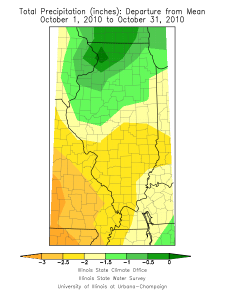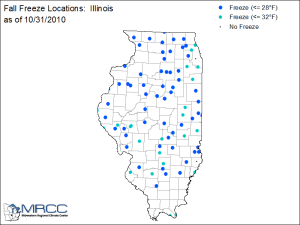The National Weather Service office in Davenport has issued this statement of a possible frost on Wednesday night:
Canadian high pressure will bring the threat of an early season frost by late Wednesday night. Areas along and north of Interstate 80 may dip down into the middle to lower 30s after midnight. These kind of temperatures will produce patchy to areas of frost by early Thursday morning. People in these areas should plan ahead and be ready to take the necessary precautions to prevent damage to cold sensitive vegetation. A Frost Advisory may eventually be issued for portions of the area. North winds maintaining 5 to 10 mph will help keep temperatures in the upper 30s south of I-80 and thus limit the frost potential in those areas.Normal 1st 32 degree temperatures range occur around early October in Northeast Iowa and Northwest Illinois, to mid October in West Central Illinois and Northeast Missouri.
You can check freezing temperatures from around the Midwest at the Midwestern Regional Climate Center…








